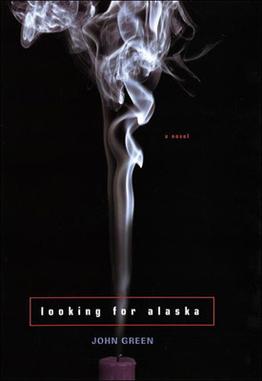
John Green’s Looking for Alaska was first published in March of 2005. The novel was the author’s attempt at creating meaningful young adult fiction. The novel, based loosely on Green’s time at Indian Springs School in his youth, follows a group of high school-age students at a boarding school in Alabama as they navigate through young adult life and have their first tastes of freedom. The main character and narrator of the novel, Miles Halter, begins his time at the boarding school in his search for a “Great Perhaps.” During his time here, he meets a group of close-knit friends before experiencing a tragedy within the group. Looking for Alaska is broken into two parts, a before and an after, and explores themes in meaning, young relationships, death, grieving, and hope.
As a personal fan of Green’s novel, among his many others, I first read Looking for Alaska in high school and, along with my peers, enjoyed it immensely. However, the novel was named 2015’s most challenged book; challenged in the sense that someone requested to have the book removed from a school or library. While scenes in Looking for Alaska contain smoking, drinking, and offensive language, the main reason for challenging the novel in schools and libraries is the claim of sexually explicit content. Specifically, there is a scene involving an awkward sexual experience that Green argues is often taken out of context and, therefore, misses its point.
In 2015, the novel was challenged for the reasons stated above. At the time, I was unaware of the controversy surrounding the novel and how that controversy is still a topic of discussion. Now, a new wave of challenges is spreading through U.S. schools and libraries but this time, the novel is being used as a front to ban the books of authors of color. John Green tweeted about the problematic nature of this wave of bans on February 2, 2022, saying, “But what’s especially frustrating this time is to see Alaska used as a cover so these banned lists can claim it’s not (all) about race.” Many of the books that are being challenged and banned are by Black authors such as Toni Morrison and Ibram X. Kendi. It was disheartening to hear the controversy surrounding Looking for Alaska in 2015, and even more so now. Green ends his tweet with an air of warning, “…trying to eliminate those books from curricula and collections is white supremacist idealogy at work. It harms publishing. It harms kids. It harms America.”
Book bans and challenges are damaging in many ways, and young adults should have access to these texts. In a way, it is comforting to know that authors like Green, as well as other forms of literary authority, are standing up and speaking out against these book bans.
